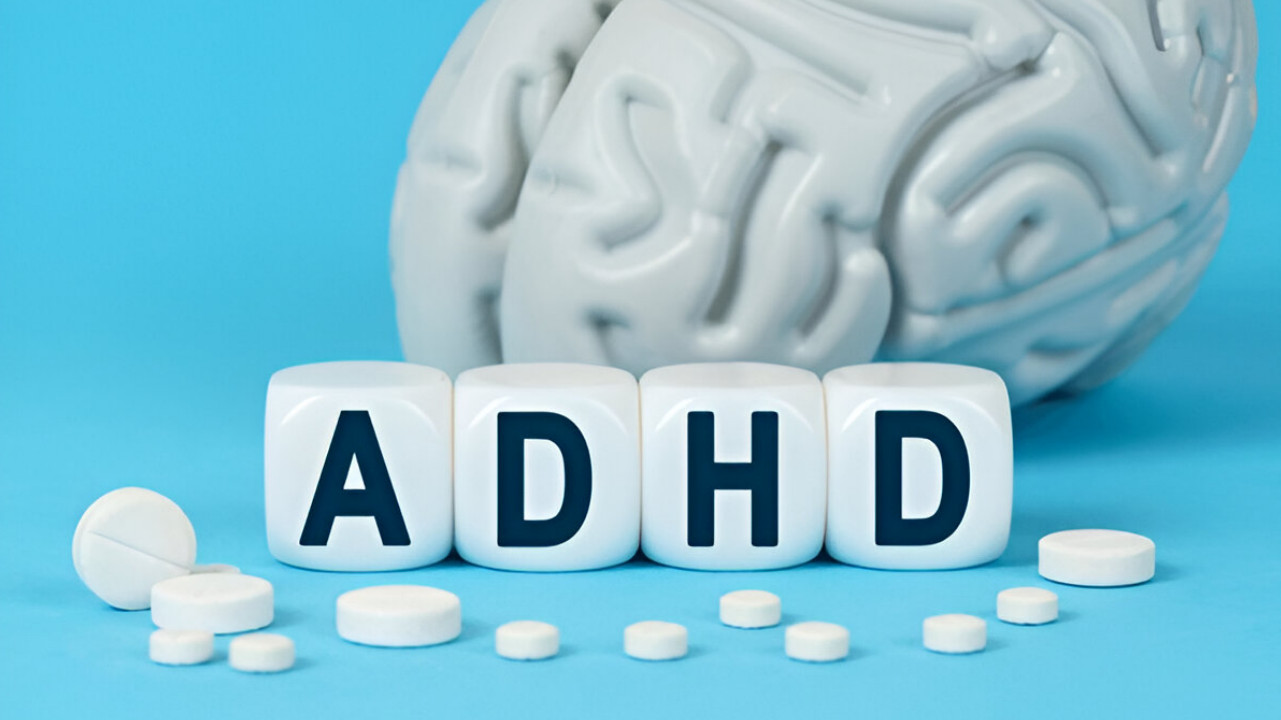So you've heard about "temporal lobe ADD" a term that sounds pretty official, right? Like something straight out of a medical textbook. Maybe you stumbled across it during a late-night Google search, trying to make sense of why you or your child struggles with focus, memory, or mood swings.
Here's the thing and I want you to hear this clearly temporal lobe ADD isn't actually a real medical condition. It's not recognized in any official diagnostic manual, and there's no solid scientific evidence backing it up as a distinct subtype of ADHD. But that doesn't mean the symptoms people associate with it aren't real. Far from it.
Let's dive into what's actually going on here, why so many people are talking about it, and most importantly, what you can do to get the real help you deserve.
What Exactly Is Temporal Lobe ADD?
This idea started gaining traction through the work of Dr. Daniel Amen and his "7 types of ADD" theory. His clinics use SPECT brain imaging to identify different patterns of brain activity, and one of those patterns became known as temporal lobe ADD.
The theory suggests this subtype affects emotional processing, memory, and mood regulation all based on how the temporal lobe appears on brain scans. It sounds compelling, especially when you're desperate for answers about why your brain seems to work differently.
But here's where we need to take a step back. The American Psychiatric Association's Diagnostic and Statistical Manual of Mental Disorders (DSM-5) the gold standard for psychiatric diagnoses doesn't recognize temporal lobe ADD. At all. There are only three official ADHD subtypes: predominantly inattentive, predominantly hyperactive-impulsive, and combined type.
Symptoms That Sound Familiar
Now, I get why people resonate with this concept. Let's be honest who hasn't felt forgetful, moody, or overwhelmed at times? But when these experiences start significantly impacting daily life, they grab our attention.
People commonly report experiencing:
- Memory problems that seem beyond normal forgetfulness
- Sudden mood swings or explosive anger
- Difficulty processing spoken information
- Anxiety or panic attacks without clear triggers
- Occasional paranoid thoughts or mild hallucinations
- Learning challenges or developmental concerns
Let me share something that happened to a friend of mine, Sarah. She'd always felt "different" spacing out during conversations, getting overwhelmed in crowded places, and having intense reactions to seemingly small frustrations. When she read about temporal lobe ADD online, it felt like she'd finally found her tribe. But was that really what was going on?
Turns out, Sarah's challenges were better explained by classic inattentive ADHD combined with some anxiety conditions that are well-documented and treatable. The relief she felt once she had accurate diagnoses was incredible to witness.
The Brain Science Behind the Confusion
Sometimes people experience temporal lobe damage from injuries, infections, or other medical conditions. When this happens, yes, it can affect memory, emotion, and processing abilities. A 2020 study did find some changes in the temporal lobe regions of boys with ADHD, but these weren't isolated or specific enough to define a new subtype.
Think of it this way: just because your car's engine light comes on doesn't mean you have a unique type of car problem. It just means something needs attention. Same with brain scans they might show differences in activity, but that doesn't automatically create a new diagnostic category.
Why This Misunderstanding Matters
Here's where things get tricky and honestly, a bit concerning. When we start labeling normal human experiences or symptoms of other conditions as "temporal lobe ADD," we risk missing what's really going on.
Let's be real: symptoms like severe mood swings, paranoia, or hallucinations aren't typical ADHD symptoms. They could indicate other serious conditions that need proper evaluation bipolar disorder, anxiety disorders, trauma responses, or even psychotic episodes.
Mislabeling these experiences delays real treatment. It's like putting a Band-Aid on a broken bone it might feel comforting temporarily, but it doesn't address the actual problem.
The Marketing of Brain Scans
I want to be fair here. Clinics like Amen's have helped many people feel understood and empowered. When you see your brain scan and hear explanations that resonate, it can feel incredibly validating. But we need to separate feeling understood from receiving scientifically sound diagnoses.
SPECT imaging can be a useful tool for guiding clinical intuition, but it's not a diagnostic tool approved by the FDA for psychiatric conditions. The interpretations often aren't backed by rigorous scientific evidence, especially when they're being used to create new diagnostic categories.
It's kind of like how personality quizzes online can be fun and sometimes insightful, but they don't replace professional psychological assessments. There's a difference between entertainment and medical diagnosis.
What Actually Works for ADHD
Here's the good news we have plenty of effective treatments for ADHD that actually work, regardless of which "subtype" someone might fit into. And they're based on solid research, not marketing buzzwords.
Evidence-based treatments include:
- Behavioral therapies, especially cognitive behavioral therapy (CBT)
- Medications like stimulants for attention issues, or SSRIs for mood regulation when needed
- Lifestyle changes like regular exercise, good sleep hygiene, and stress management
- Support groups and coaching for practical strategies
- Occupational therapy for sensory or organizational challenges
These approaches work because they address the actual neurological differences in ADHD brains, not some invented categorization system. Your brain doesn't need a trendy label to benefit from proven interventions.
For example, taking a daily walk whether morning or evening can significantly improve prefrontal cortex function, which helps with attention and executive functioning. This works for everyone with ADHD traits, regardless of whether they "qualify" for some special category.
Avoiding Diagnostic Confusion
If you or someone you love experiences extreme symptoms like frequent aggression, persistent paranoia, or thoughts of escaping reality, please don't dismiss these as just "temporal lobe ADD." These could be signs of serious conditions that need professional attention.
It's completely understandable to want to make sense of confusing experiences. We all do it. But when we're dealing with mental health, accuracy matters. It's the difference between getting effective help and spinning our wheels with ineffective approaches.
Think of it like this: you wouldn't try to fix a complex car engine with duct tape and wishful thinking. Your brain deserves better than trendy labels and unproven treatments.
Your Struggles Are Valid Even Without a Trendy Name
What I want you to take away from all this is simple but important: your struggles are real, even if they don't fit neatly into a newly coined diagnostic category. Memory issues, mood challenges, and attention difficulties deserve attention and care but from approaches that actually work.
Instead of getting caught up in searching for the perfect label, focus on finding support that improves your daily functioning. That might mean working with a therapist who understands ADHD and neurodiversity, talking to a psychiatrist about evidence-based medications, or simply implementing lifestyle changes that support brain health.
Remember Sarah from earlier? Once she had proper diagnoses and treatment for her actual conditions, the relief was immediate. She didn't need a special label she needed real help.
Moving Forward with Clarity
The next time you hear about temporal lobe ADD or any other unofficial "subtype" of ADHD, remember this conversation. Feel free to be curious, but also stay grounded in what we actually know works.
Your brain is beautifully complex, and your experiences matter not because they fit into a trendy category, but because you matter. The path forward isn't about finding the perfect label; it's about finding real solutions that actually improve your quality of life.
If you're sitting there thinking, "But what about my specific symptoms?" that's exactly the right question to ask a qualified mental health professional. Not to fit you into a box, but to understand what's really happening and how to help effectively.
Because at the end of the day, labels come and go, but genuine care and evidence-based support? That's what makes the real difference in people's lives.
What resonates most with your experience? Have you ever felt pulled toward a specific label that later turned out not to quite fit? I'd love to hear your story it might help someone else feel less alone in their journey toward understanding.
FAQs
Is temporal lobe ADD a real medical condition?
No, temporal lobe ADD is not recognized in official medical manuals like the DSM-5. It stems from non-standard brain imaging interpretations and lacks scientific support.
What are the symptoms linked to temporal lobe ADD?
Commonly reported symptoms include memory problems, mood swings, anxiety, difficulty processing speech, and occasional paranoia — which may reflect other diagnosable conditions.
Who popularized the idea of temporal lobe ADD?
Dr. Daniel Amen and his clinics promoted this concept through SPECT brain imaging as part of his "7 types of ADD" theory, which is not scientifically validated.
Can brain scans diagnose ADHD or temporal lobe issues?
Brain scans like SPECT are not FDA-approved for diagnosing psychiatric conditions. They may assist clinical insight but should not be used alone for diagnosis.
What should I do if I recognize these symptoms in myself?
Consult with a licensed mental health professional for an accurate diagnosis and evidence-based treatment rather than relying on unproven categories or labels.
Disclaimer: This article is for informational purposes only and does not constitute medical advice. Always consult with a healthcare professional before starting any new treatment regimen.
Related Coverage
Choosing the right doctor requires assessing your health priorities and needs. Research physician qualifications, check access and availability, get recommendations....
Explore safe and legal options to get Strattera online amid ADHD medication shortages. Learn about reputable sources, telemedicine services, and how to work with healthcare professionals....
Las Vegas offers quality ADHD treatment including diagnosis, medication management, therapy, coaching, and support groups. Find specialists to create a tailored plan....
Learn effective strategies to help your child with ADHD succeed academically and behaviorally at school. Tips cover working with teachers, home routines, organization and more....
Uncover the potential connection between ADHD and hearing loss in adults. Learn about the challenges, risk factors, and multidisciplinary approaches to address this overlooked association....
Games build crucial skills for children with ADHD. Explore top game types and titles that create engaging outlets for energy and improved focus, memory and coordination....
Coping with retinol irritation like burning, redness, dryness? Learn how long symptoms last, when to worry, and get aftercare tips to heal skin post inflammation....
Hyperfixation and depression often intersect; discover signs of crashes, practical guardrails, and steps toward balanced well‑being....
Adderall shortages make filling prescriptions difficult. Here are tips for finding pharmacies with medication in stock, alternative meds, and coping strategies....
Wondering about ADHD testing costs? Get the scoop on prices, insurance tips, and affordable options in this friendly, easy-to-read guide!...








